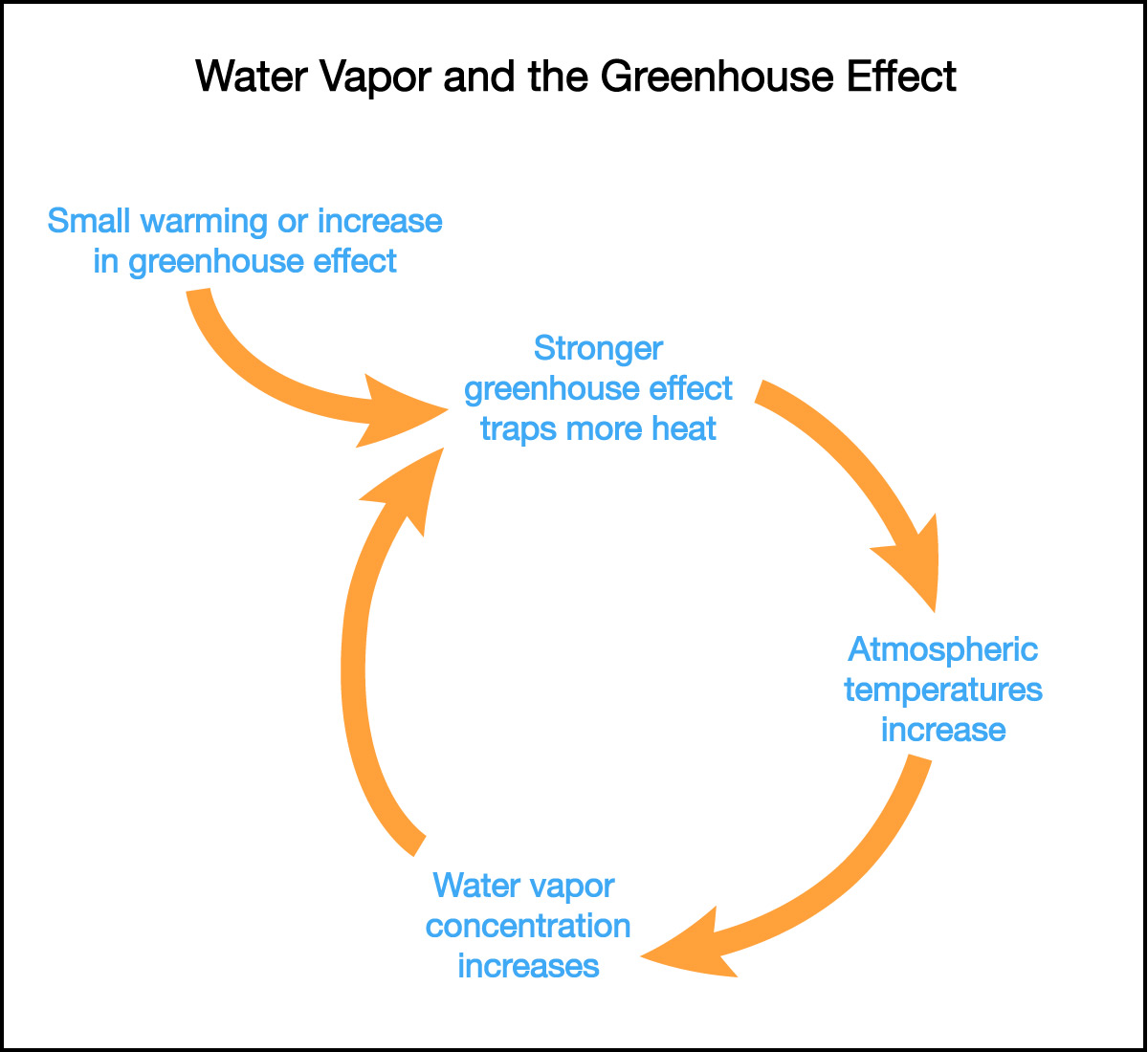How important is water vapor to Earth’s natural greenhouse effect?
This is a very good and somewhat subtle question. In fact, as you learned in Chapter 6, Earth’s atmosphere actually contains much more water vapor than carbon dioxide (several times as much on average), and as a result, water vapor contributes more than carbon dioxide to Earth’s overall greenhouse warming. However, carbon dioxide is the more critical gas in setting Earth’s temperature.
The reason is that once carbon dioxide gets into the atmosphere, it tends to stay there for a long time — decades, centuries, or even millennia. In contrast, water vapor cycles easily into the atmosphere through evaporation and out of the atmosphere through rain and snow. The amount of water vapor in the atmosphere at any given time is therefore determined by the temperatures of the ocean and atmosphere. As a result, the amount of water vapor in the atmosphere automatically changes in response to temperature changes, but it cannot by itself cause those changes. Instead — and very importantly — water vapor amplifies temperature changes initiated by changes in the amount of carbon dioxide (or other factors), because it acts as a reinforcing feedback . For example, if more carbon dioxide raises the global temperature a little bit, the increased evaporation will add more water vapor to the atmosphere, which then traps more heat, making the temperature rise even more (Figure 1). Conversely, if the carbon dioxide level drops, the global temperature decreases so that there is less water vapor in the atmosphere, which then traps less heat so that the temperature drops further.

A bicycle makes a good analogy if you think of water vapor like the wheels and carbon dioxide like the pedals (and crank): The pedals drive the wheels, even though it is the size and spin rate of the wheels that determines how fast the bicycle goes. In much the same way, changes in the amount of carbon dioxide in the atmosphere drive temperature changes, even though most of the total temperature change comes from the changes in water vapor that occur as a result.